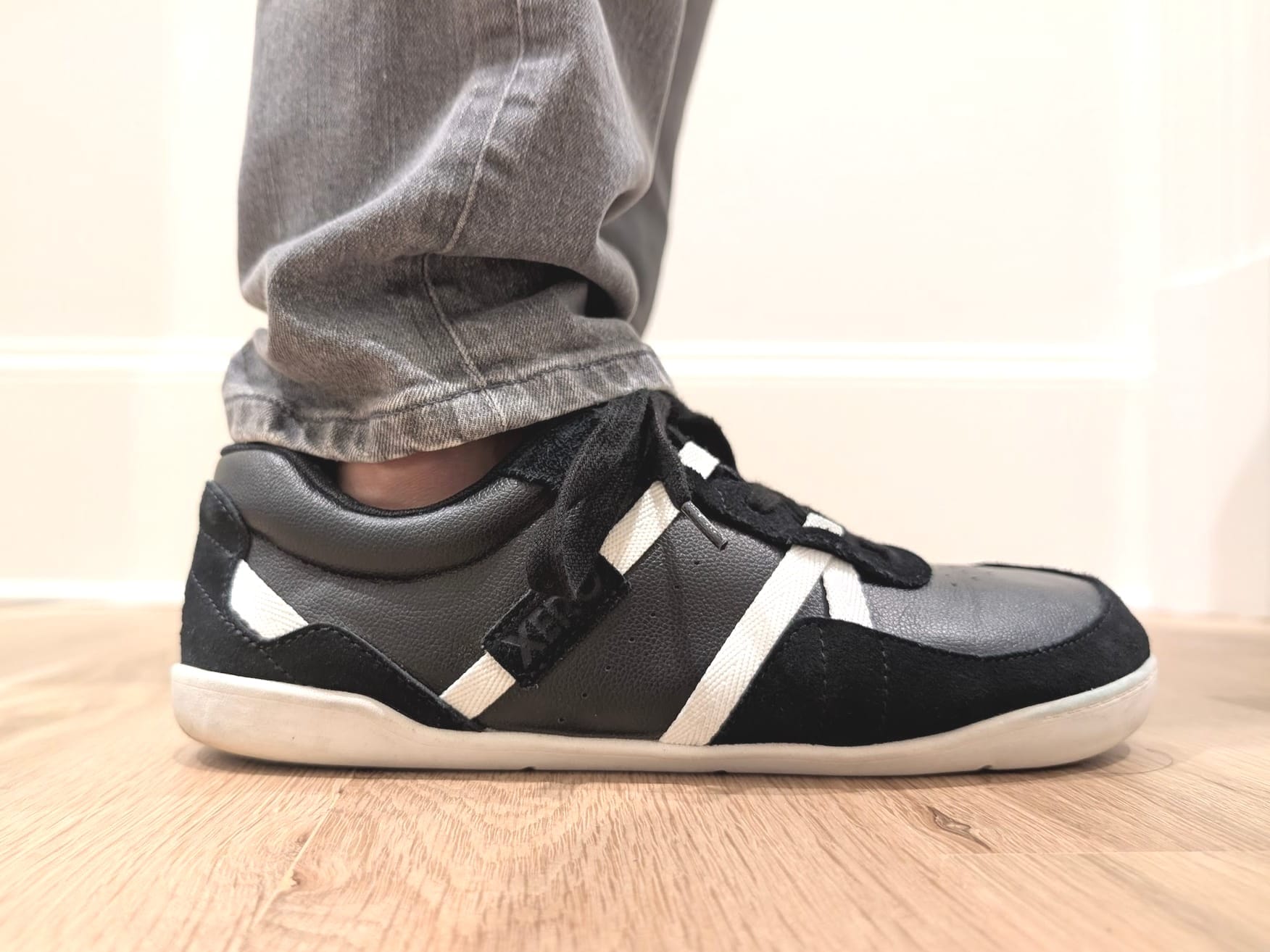Review: Vivo Barefoot Tracker FG Minimalist Hiking Boots
What's the deal with minimalist, barefoot-minded hiking boots? Is a "barefoot hiking boot" even possible? If you're like me, when you think about hiking boots, you probably think of those stiff-soled shoes you can pick up at REI—like these. Traditional…

What's the deal with minimalist, barefoot-minded hiking boots? Is a "barefoot hiking boot" even possible?
If you're like me, when you think about hiking boots, you probably think of those stiff-soled shoes you can pick up at REI—like these. Traditional hiking boots—disclaimer: I've never owned any—always struck me as clunky and uncomfortable. On the positive side, they looked bombproof, ready for adventure, and offered important protection against the unpredictable, ground-level stuff you're sure to encounter on long adventures in the woods. You know, rocks, brush, errant roots and sticks, water hazards and mud, the cold—even wildlife.
So wouldn't it be great to have all the protection-against-the-elements of a traditional hiking boot but with a minimalist sole—one that didn't sacrifice all connection to the ground?
The designers at Vivo Barefoot think so. Their recent update to their "barefoot" hiking boot—the Vivo Barefoot Tracker FG—is an attempt to balance hiking boot protection and minimalist-shoe requirements.
Do they get it right? Read on for my full review!
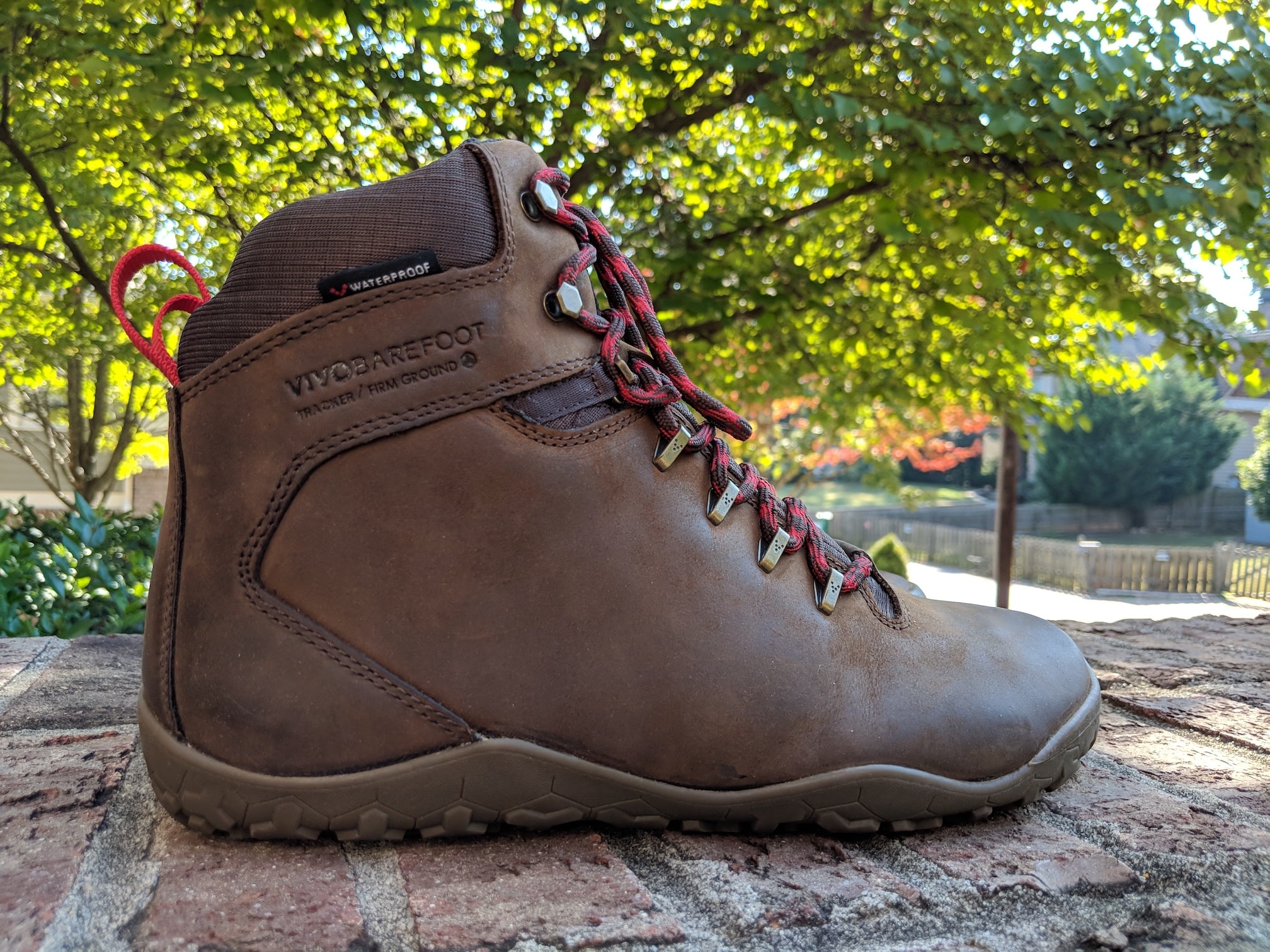
Meet the Vivo Barefoot Tracker FG
Vivo sent me a pair of the Tracker FG to review. I was nervous about these boots. They looked great online but at some point in the past decade of wearing Vivos, I'd bought and tested a pair of Vivo's old "Offroad Hi" hiking shoes—they look like a much less refined version of the Tracker. I remember them only insomuch as I recall the sole's lugs were tall and uncomfortable when worn on hard surfaces. This was because the tall lugs of the old Offroad His would push into your foot due to the "base" of the sole being so pliable. The good news with the Tracker is that it has opted for considerably less aggressive lugs on the Tracker. In fact, the "FG" in the name of the Tracker is an initialism for "Firm Ground" and stands in contrast to Vivo's other outdoor sole, the "SG" (Soft Ground):
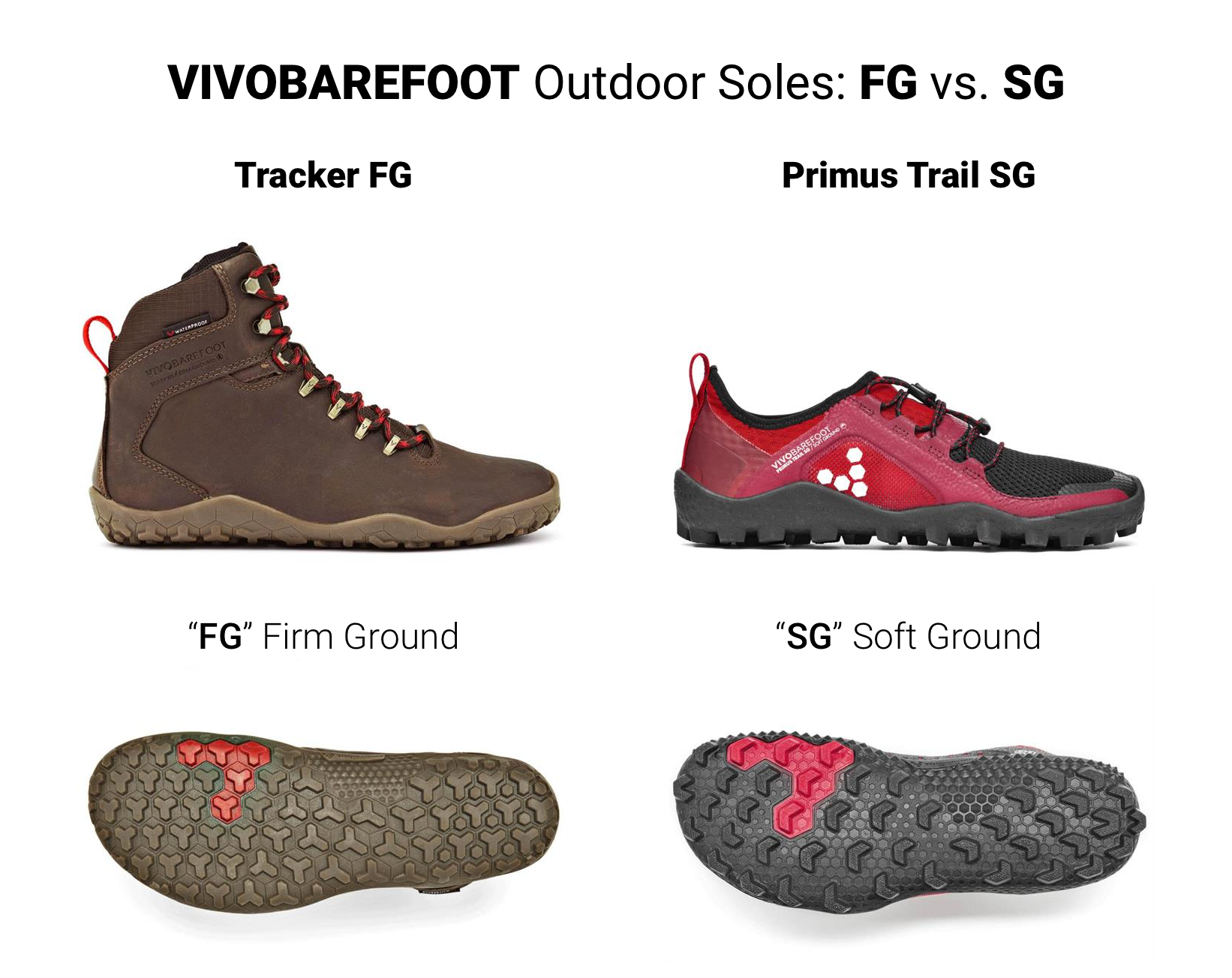
(Sidenote: I've also tried the Vivo Barefoot Primus Trail SG in the photo above. Unfortunately, they were too uncomfortable on my feet to wear enough to review due to them having a pretty wholly different to my still much-loved pair of Vivo Barefoot Primus Lux!).
I'll talk more about the sole in a bit. Here's how Vivo Barefoot talks about the Tracker FG on their website:
This lightweight, leather hiking boot is designed for wild and rough terrains. Tracker features our Firm Ground sole with chevron lugs that provide traction over trails and rocky landscapes. This barefoot boot is fully waterproof, constructed with a sealed inner membrane reinforced by hydrophobic leather proofing. The removable thermal insole allows you to explore nature in all its seasonal glory.
In short, Vivo Barefoot has tried to create a bulletproof hiking shoe that can handle the elements—water and cold—while still being designed in a way to facilitate a more barefoot-like experience. It's almost like the top and sides of these boots are the beefiest parts while the soles are trying to stay as minimalist as possible while still giving you traction on rough terrain, some thermal protection, a large toe box (plus zero drop), and a flexible sole.
Making this work well is no easy task. Before I get into the specifics of how they do at it, take a spin through these photos of the Vivo Barefoot Tracker FG (in brown leather):

The Tracker's Firm Ground Sole
The "FG" or "Firm Ground" sole on the Tracker has something like 60 three-prong 3mm lugs. This is in contrast to the roughly 45 "flying v" lugs on the "SG" or "Soft Ground" sole featured on some of VivoBarefoot's other offroad trail shoes. Also of note on the FG sole is how the density of lugs is thickest at the forefoot and heel, with additional "in between" lugs on the heel.
Overkill? Nah. What's great about this sole design is two fold.
For one, the density of lugs is "just right" to give you some decent traction on a hike while also being "just right" for wearing these boots on very firm ground, including concrete, manufactured floors, and pavement. Given how expensive the Trackers are ($250), being able to wear them off the trail and the in the man-made world is likely something you'll want to do. Unlike the old Vivo Offroad HI and also the Primus Trail SG, the FG sole of the Tracker is just fine for everyday wear.
For another, the sole's rubber is dense enough to transmit feel to the foot—it's not squishy or soft, even with the removable insole. This means that you still get pretty solid ground feel on varied terrain. The texture of roots and gravel clearly passes through, but not uncomfortably so. The softness of mulch—you still get it. Sure, the volume is turned down a bit, but not so much that you stop paying attention.
Of course it's not as much ground feel as a pair of FiveFingers or Xero Shoes (e.g. the Xero Daylite Hiker, which has less aggressive lugs, and certainly not Xero's sandals). However, given the beefiness of the Tracker FG, ¯\_(ツ)_/¯. I really like it.
The Tracker FG's ground feel is, in the end, about what you'd expect from a beefier barefoot hiking shoe. It's a good compromise. By way of another point of comparison, you'll recall my recent mini-review of the Lems Trailhead, which are both thick-soled and stiff, totally out of character for your typical pair of Lems. In the oxymoronic category of "barefoot" hiking shoes, the Lems don't quite fit—yet the Trackers hit the spot, at least for me.
Ultimately, the Tracker FG's sole is a nice design compromise between sole flexibility, ground feel, and ruggedness. Oh and it's also nicely contoured on the sides where the outsole wraps around the foot (no hard angles).
And all this with the removable 3mm insole in place: I never felt the need to remove the insole to get better ground feel. (More on that thermal insole below.)
Like most VivoBarefoots, the sole of the Tracker FG is glued to the upper. While I've had no problems with this method of attachment, it's too early to draw any conclusions for long-term durability.
One final thing you're probably wondering about: no, there is not a VivoBarefoot Tracker "SG" with taller, more aggressive lugs. Having had the Offroad Hi of old which had lugs more like the "SG" style sole of other Vivo offroad shoes, I don't think you're missing anything.
Tracker FG Features
The Tracker FG comes with a couple of notable product features—waterproofing and thermal protection. Check out these materials that ship with the shoes:
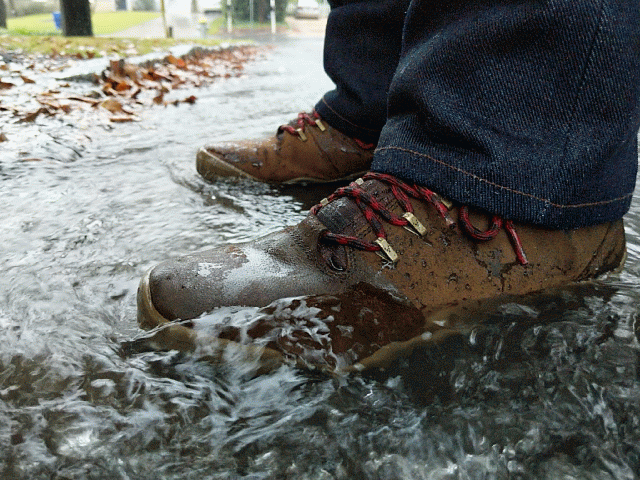
Waterproofing
The Tracker FG has a "HydroGuard" waterproof upper with, per Vivo, "Heat sealed seams and / or hydrophobic inner bootie construction with non-absorbent materials." Because of the way they are made, there is no easy way for water to get in the Trackers until you get to the ankle. This is due to how the tongue sewn to the rest of the boot.
Thanks to a rainy Fall here in Atlanta, I've worn them through some fairly wet conditions. Today, as Atlanta sustained an all-day deluge of steady to heavy rainfall, I was able to just stand in some water by the curb. While the Tracker's leather upper appeared to "soak" rather than bead up water, no moisture seemed to get inside the boots. I imagine that long-term you'd probably want to oil the leather or use some other method to boost the water-resistance of the leather. That said, I suspect the real water resistance comes from the liner inside the boots.
Thankfully, whatever waterproofing is in place, the Trackers seem to breath very well! I have had no problems with my feet getting sweaty wearing them with socks all day. That said, an all-day hike is where you'd really get some sweaty feet, putting breathability to the test.
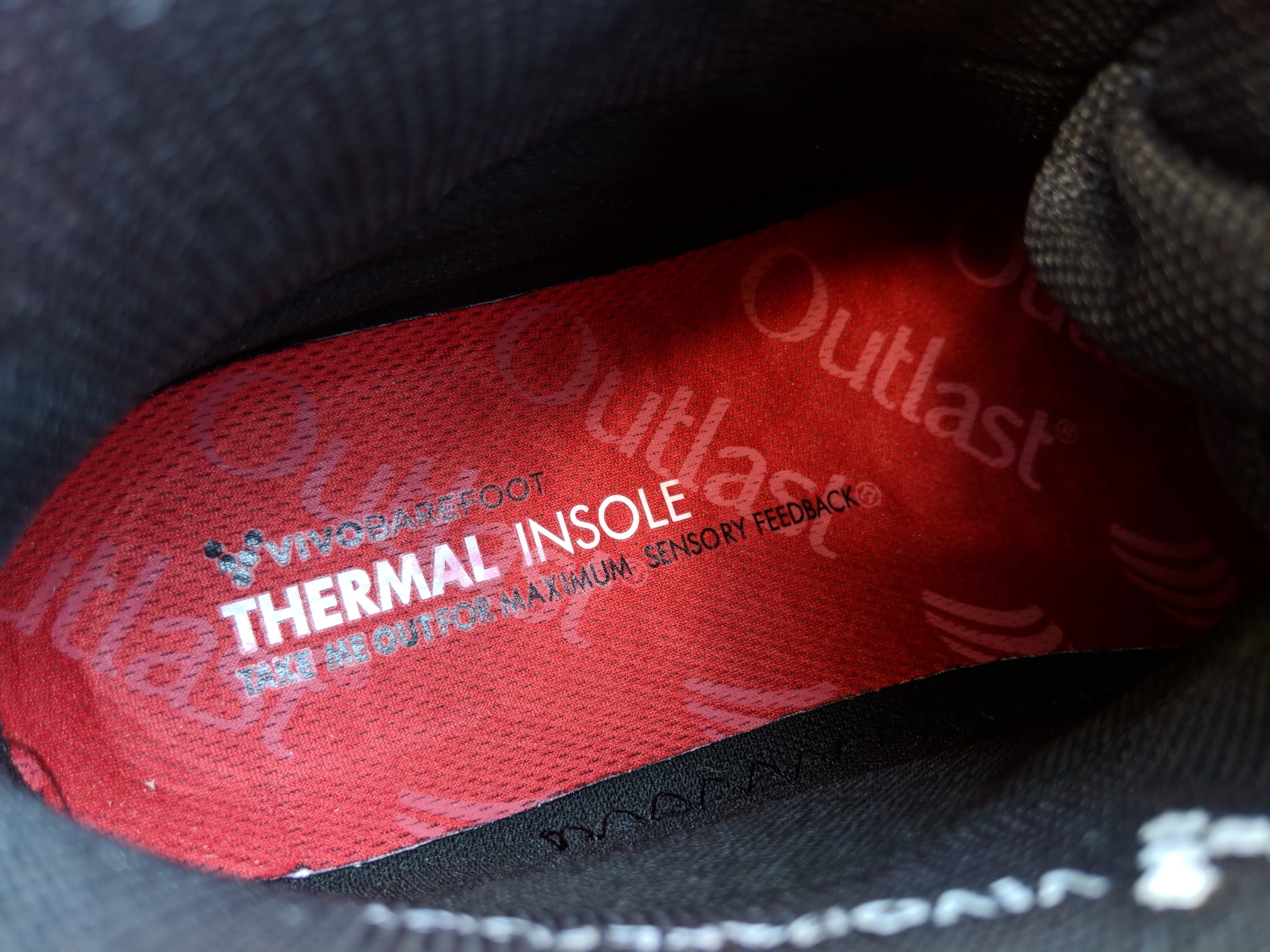
Thermal Insole
The Tracker FG comes with an Outlast thermal insole that is 3mm thick. If you remove the insole, which you could do if you don't want that extra thickness or the thermal protection, you discover little perforations in the base that reveal some reflective, presumably metal liner amidst the foam:

I live in Atlanta, Georgia. We've had some lower temps the past week or so and I've been outside sitting through my daughter's soccer games, which have been in the upper 30s and lower 40s. In these conditions, which aren't particularly bad for cold, the Trackers are just fine, and the sole specifically does a good job insulating—moreso than the upper, I think.
I have done all my testing of the Tracker wearing regular socks. I'm wearing a size 44 in the Tracker (foot is a 10.5) and with my basic socks (not thermal socks), the Tracker still has a little room for my foot, making me feel confident that were I to be in very cold temps (e.g. upper 10s or 20s), I'd be okay.
We'll see.
Outside of the insole, the upper is thick-walled around the ankle and you have both the leather and an inner lining to provide some insulation for your feet.
As Winter approaches, I'll be sure to get more use out of the Trackers in the cold and can update here as I learn more.
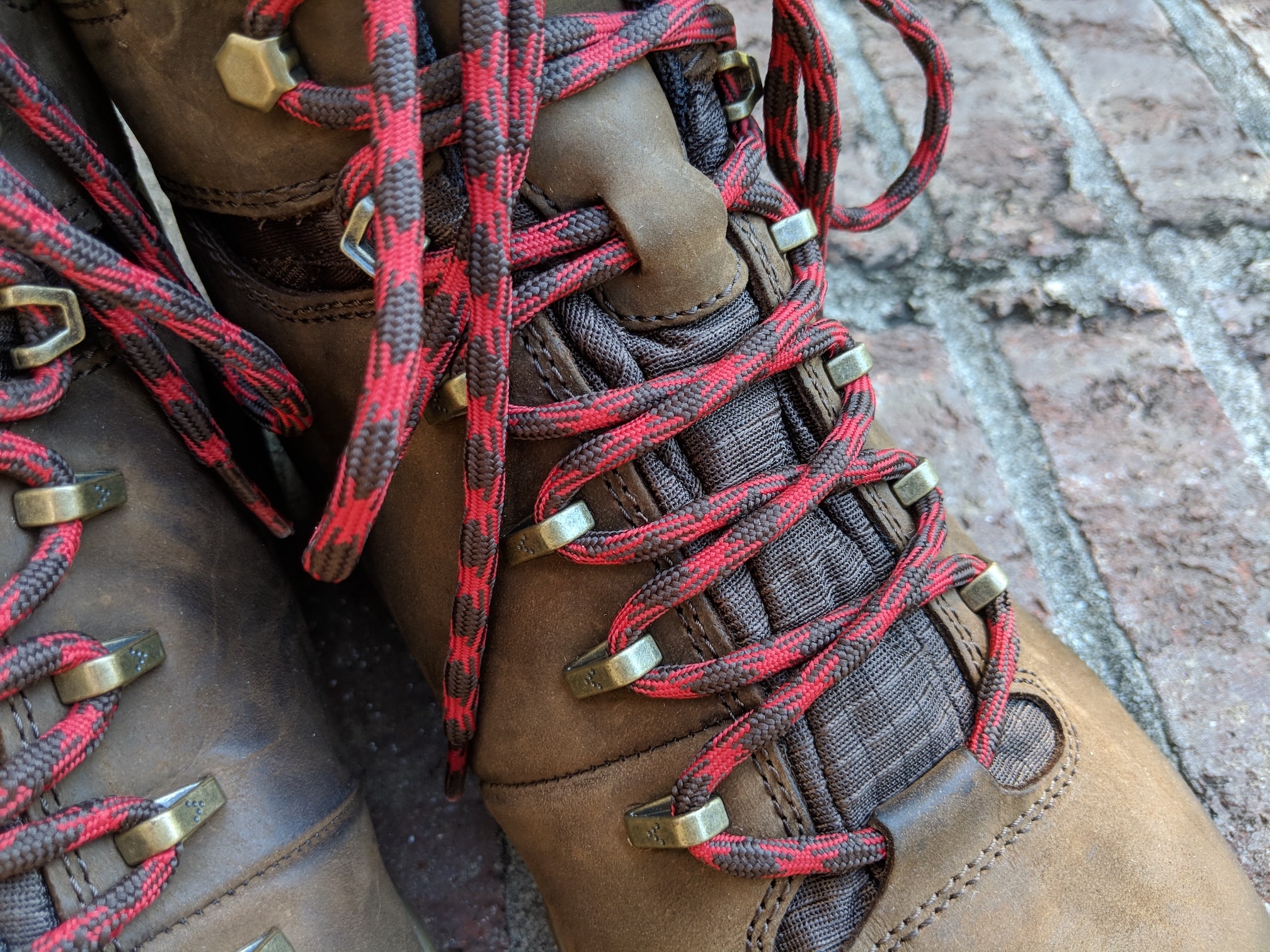
The Looks!
VivoBarefoot did a superb job marrying high quality materials for the Tracker FG. Everything from the stamped leather branding to the metal eyelets and hexagonal lacing hooks. Even the laces are a step above what I've come to expect out of other shoes. All told, these elements combine to make you feel confident you have a well-crafted pair of boots.
They also come together quite stylishly. Worn outside your jeans or pants or under khakis or jeans—either way the Tracker FG look nice. Mind, they do signal "outdoors" due to the red lace color and the lugging of the soles, so they're only ever going to pass as casual shoes. Even still, there's a lot to like about these boots from an aesthetic standpoint.
Tying It Together — the Overall Experience
There's just a lot to like about these boots, but how does it all work? What's the experience?

Let me start with the one negative thing about the Tracker FG: lacing hooks. There are three lacing hooks at the top of these boots. Two of them are fairly standard and the last two are hexagons. Functionally speaking, these things work great to securely tie the boots. The laces feel locked in place once you get them in there. It's just that having to re-lace through lacing hooks each time you put on the shoes—and somewhat reverse that process when taking them off—is a bit of a pain. It's a super minor thing to complain about, I know!
And I suppose that's a good thing because I don't really have any other complaints about these boots.
The Tracker FG is very comfortable as boot you wear all day long. The sloping arch of the high-top poses no annoying problems to your ankle when walking. (In contrast to, say, the Lems Boulder, which can rub your rear lower leg a bit on walking.) Want to wear your Tracker FGs all day long in a non-outdoors environment? Sure go ahead.
As far as actually hiking in the Tracker FG, they perform just fine here, too. I've taken them on a hike near the Chattahoochee River and while they were probably overkill for that excursion, they inspired confidence in my step while giving me plenty of that earthy ground feel we all enjoy from our minimalist footwear.
Yay!
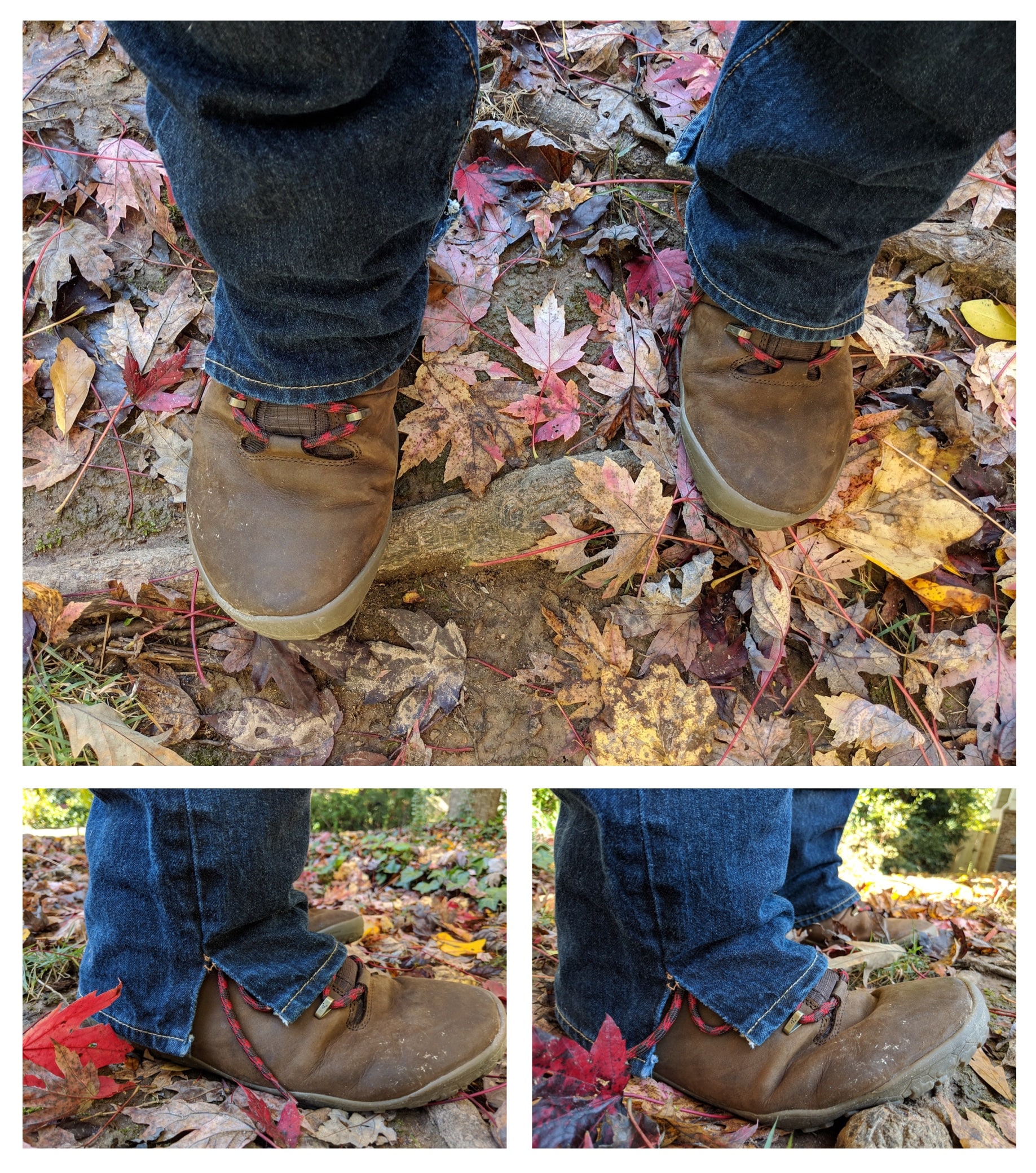
If you haven't figured it out, I like these boots in almost every way that matters.
VivoBarefoot doesn't always get it right. However, they are always iterating and improving, which is well demonstrated by the Tracker FG. It's a good looking hiking boot that's beefy in construction and ready for the elements while still offering us the kind of ground-feel experience we enjoy. By being a "hiking boot" they aren't going to win any awards for being the most minimalist hiking boots, but they look good, are built tough, and should perform well.
As I get more use out of the Tracker FGs (I've had them now for a bit over a month), I'll update this review where appropriate. If you want to pick up a pair, be ready for a little sticker shock: these guys cost $250 at VivoBarefoot.com.
And Christmas is right around the corner ...
Hit me with any questions in the comments!


